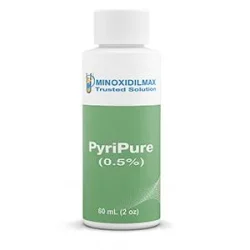The Causes, Symptoms, and Treatments of Telogen Effluvium
Hair is not only an important part of our appearance but also a reflection of our overall health. When significant hair loss occurs, it can be concerning and often leads to questions about the underlying causes. Telogen Effluvium (TE), though relatively common, is a hair shedding condition that often goes unnoticed or misunderstood. In this article, we will explore telogen effluvium, shedding light on its causes, symptoms, and recovery process.
What is Telogen Effluvium?
Telogen effluvium is a type of temporary hair loss condition characterized by an excessive shedding of hair. Unlike some other forms of hair loss, telogen effluvium is typically reversible. It occurs when a significant number of follicles suddenly shift from the growth phase (anagen) into the resting phase (telogen). Various factors can be triggers, including physical or emotional stress, illness, major surgery, hormonal changes (such as childbirth or menopause), medications, or nutritional deficiencies. The condition often becomes noticeable a few months after the triggering event, and individuals may experience increased hair loss during daily activities like washing or brushing their hair. While telogen effluvium can be distressing, it usually resolves on its own once the underlying cause is addressed. Once addressed, the affected hair follicles return to the growth phase.
Causes of Telogen Effluvium
Telogen effluvium is a temporary hair loss condition that occurs when a significant number of hair follicles prematurely enter the resting phase (telogen) of the hair growth cycle. Various factors can trigger this condition, including:
- Physical or Emotional Stress: Severe physical stressors such as surgery, a major illness, or a traumatic event can disrupt the hair growth cycle and lead to TE. Emotional stress and anxiety can also be contributing factors.
- Hormonal Changes: Hormonal fluctuations can trigger hair shedding. Common hormonal triggers include pregnancy (postpartum TE), childbirth, menopause, and thyroid disorders.
- Medications: Certain medications, particularly those affecting hormone levels, such as birth control pills, antidepressants, and some blood pressure medications, can lead to TE as a side effect.
- Nutritional Deficiencies: Inadequate intake of essential nutrients like iron, zinc, biotin, and protein can disrupt the normal hair growth cycle and contribute to hair shedding.
- Crash Dieting: Rapid weight loss or extreme dieting can shock the body and result in TE due to nutritional imbalances.
- Chronic Illness: Prolonged chronic illnesses, such as autoimmune diseases, can disrupt normal bodily functions, including hair growth.
- Hypothyroidism: An underactive thyroid gland can lead to hair loss, and telogen effluvium can be one of the symptoms.
- Childbirth: Postpartum TE is common after childbirth due to hormonal changes, although it is usually temporary.
- Aging: Natural changes in hair growth and shedding can occur with age, leading to increased hair loss.
- Infections: Severe infections, high fevers, or conditions that stress the body’s immune system can trigger hair shedding.
It’s important to note that while telogen effluvium can be distressing, it is typically reversible once the underlying cause is identified and addressed. Hair usually starts to regrow within several months after the triggering event has been resolved.
Symptoms of Telogen Effluvium
The primary symptom of telogen effluvium is excessive hair shedding or hair loss. Individuals may notice more hair falling out than usual during daily activities such as washing, brushing, or styling their hair. Here are the key symptoms associated with telogen effluvium:
- Increased Hair Shedding: A noticeable increase in the amount of hair shed during daily activities, which may be particularly evident when washing or brushing the hair.
- Thinning Hair: Over time, the excess shedding can lead to a noticeable reduction in hair density and thickness, resulting in thinner-looking hair.
- Scalp Visibility: As hair density decreases, the scalp may become more visible, especially in areas where hair loss is more pronounced.
- No Scalp Itching or Pain: Unlike some other hair loss conditions, TE typically does not cause itching, pain, or inflammation of the scalp.
- No Bald Patches: TE does not usually result in bald patches or completely bald areas on the scalp. Instead, it is characterized by diffuse hair loss.
- Nail Changes: In some cases, changes in the fingernails, such as ridges or pitting, may occur concurrently with TE. These nail changes are often temporary and related to the same underlying factors.
It’s important to note that it is generally a temporary condition, and hair often begins to regrow naturally once the underlying trigger or stressor is addressed. While the shedding and thinning can be distressing, it is not associated with permanent hair loss in most cases. If you suspect you have telogen effluvium or are experiencing excessive hair shedding, consulting a healthcare professional or dermatologist is recommended to determine the underlying cause and develop an appropriate management plan.
Treatment Options
Telogen effluvium is typically a self-limiting condition, and in many cases, hair will naturally regrow once the underlying trigger or stressor has been addressed. However, there are no specific medications or treatments that can speed up the regrowth of hair in telogen effluvium. Instead, the focus is on identifying and addressing the underlying cause or contributing factors. Here are some steps and recommendations for managing telogen effluvium:
- Identify and Address the Trigger: Work with a healthcare professional or dermatologist to identify and address the underlying cause of TE. This may involve addressing stress, nutritional deficiencies, hormonal imbalances, or medication-related issues.
- Balanced Diet: Ensure you are consuming a balanced diet rich in essential nutrients for hair health, including iron, zinc, biotin, and protein. In some cases, dietary supplements may be recommended to correct deficiencies.
- Stress Management: Practice stress-reduction techniques such as mindfulness, meditation, yoga, or relaxation exercises to help manage stress levels, which can contribute to hair loss.
- Gentle Hair Care: Be gentle when washing, brushing, and styling your hair to minimize mechanical damage. Use a wide-toothed comb and avoid hairstyles that pull on the hair.
- Avoid Harsh Hair Treatments: Refrain from using harsh hair treatments, such as perming, straightening, or coloring, during the period of hair shedding.
- Scalp Care: Maintain good scalp hygiene by keeping the scalp clean. Avoid excessive use of hot water and harsh shampoos.
- Medical Evaluation: If TE persists or worsens despite addressing potential triggers, consult a healthcare professional or dermatologist for further evaluation and management options.
- Patience: Understand that it may take several months for the hair to recover and regrow fully. TE is a temporary condition, and most individuals will experience hair regrowth with time.
Conclusion
Telogen Effluvium may be unsettling when it occurs, but it is often temporary and reversible. By identifying and addressing the underlying causes, managing stress, and providing proper nutritional support, individuals experiencing Telogen Effluvium can look forward to the return of their hair’s natural thickness and vibrancy. If you suspect you have Telogen Effluvium or are concerned about hair shedding, consulting with a healthcare provider or dermatologist is advisable for an accurate diagnosis and guidance on effective management.
Want to Learn More?
View the latest scientific paper on Telogen Effluvium from the National Library of Medicine.







